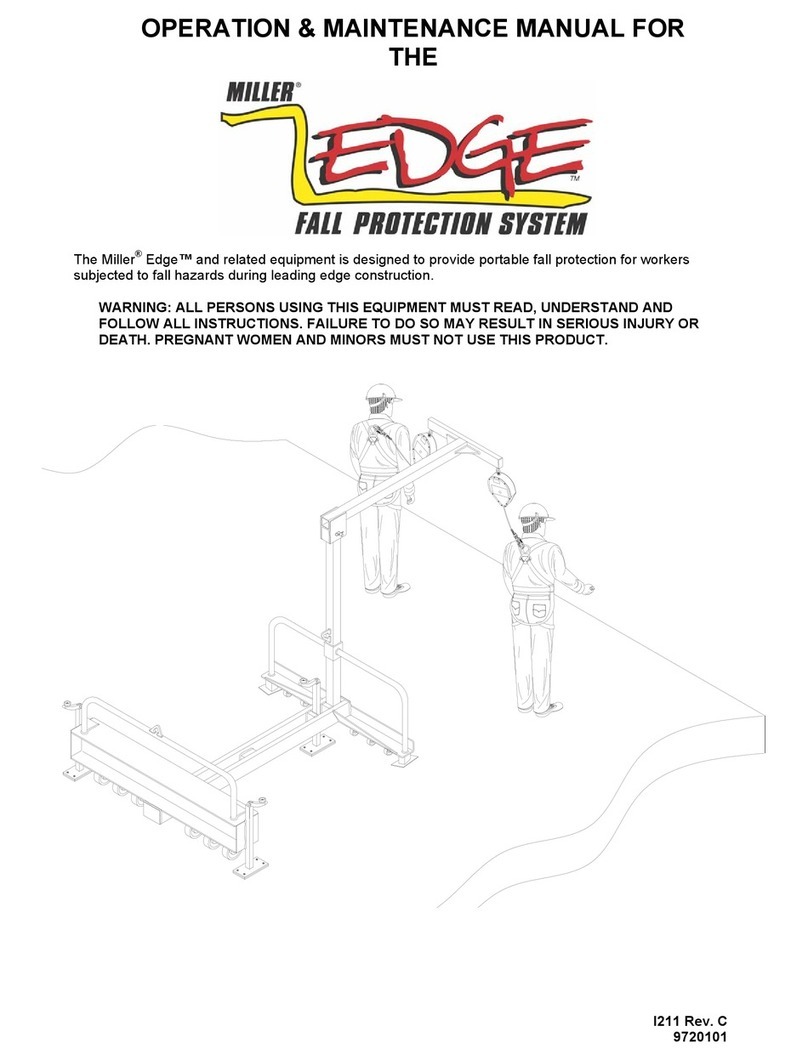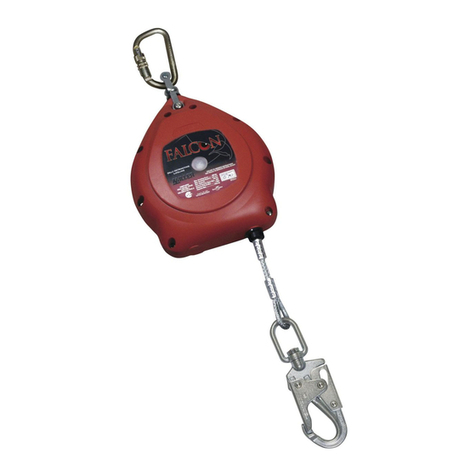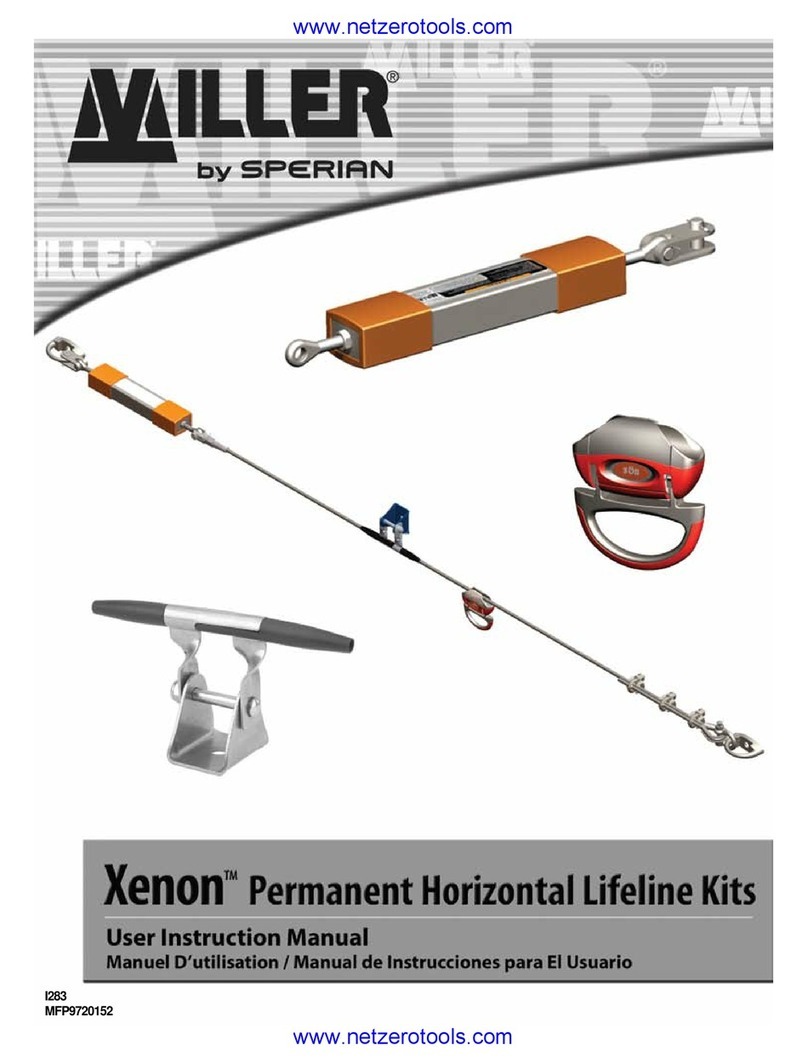User Instructions - English
4
2.0 System Compatibility
$OO0LOOHUIDOOSURWHFWLRQSURGXFWVDUHGHVLJQHGIRUXVHZLWK0LOOHUDSSURYHGFRPSRQHQWV
Substitution or replacement with non-approved component combinations or subsystems or both
may affect or interfere with the safe function of each other and endanger the compatibility within
the system. This incompatibility may affect the reliability and safety of the total system.
Equipment must not be exposed to
environmental hazards and chemicals which
may produce a harmful effect.
Do not allow equipment to come in contact
with anything that will damage it including, but
not limited to, sharp, abrasive, rough or high-
temperature surfaces, welding, heat sources,
electrical hazards, or moving machinery.
All synthetic material must be protected from
VODJKRWVSDUNVRSHQÀDPHVRURWKHUKHDW
sources. The use of heat resistant materials
is recommended in these applications.
Use in a highly corrosive or caustic
environment dictates a more frequent
inspection and servicing program to ensure
that the integrity of the system is maintained.
Do not expose the equipment to any hazard
which it is not designed to withstand. Consult
the manufacturer in cases of doubt.
Always check for obstructions below the work
area to make sure potential fall path is clear.
Allow adequate fall clearance below the work
surface.
1HYHUUHPRYHSURGXFWODEHOVZKLFKLQFOXGH
important warnings and information for the
authorized person/user.
3.0 Roof Anchors and
RooÀng Fall 3rotection System .its
Installation Warnings, Limitations and Requirements
for All Roof Anchors and RooÀng Fall 3rotection System .its
%HIRUHLQVWDOODWLRQRIDQ\URRIDQFKRURUURR¿QJV\VWHPFDUHIXOO\LQVSHFWWRHQVXUH
that it is in useable condition. Check for missing or damaged parts. Do not use if any
component does not operate properly or appears to be damaged in any way. Refer to the
inspection section of this manual.
Only trained and competent personnel should install and use this equipment.
Anchor and system must be installed and used in such a manner as to minimize the
potential for a swing fall hazard and limit free fall distance to 6 feet (1.8m) or less.
Ensure that the anchor point selected is at a height that will not allow a lower level to be
struck should a fall occur. To ensure adequate fall clearance, consider the following:
Rope grabs have a maximum fall arrest distance of 39 in. (1m).
Synthetic rope lifelines may stretch up to 5%. For synthetic rope lifelines, add 1 ft.
(0.3m) of fall clearance for each 20 feet (6m) of rope above the connection point.
Always remember that shock absorbers will elongate when subjected to fall arrest
forces. Refer to the labels on the connecting device to obtain the maximum
elongation distance.
In addition to the above, it is essential to consider other components and variables,
including but not limited to, the height of the worker to the worker’s back D-ring, the
length of the lanyard, the position of the worker in relation to the anchorage, and
potential harness stretch of up to 1 ft. (0.3m).
Miller Fall Protection recommends that a 3 ft. (0.9m) safety factor be added to all fall
clearance calculations.
Call Miller Technical Service if there is any question about calculating fall clearance.































